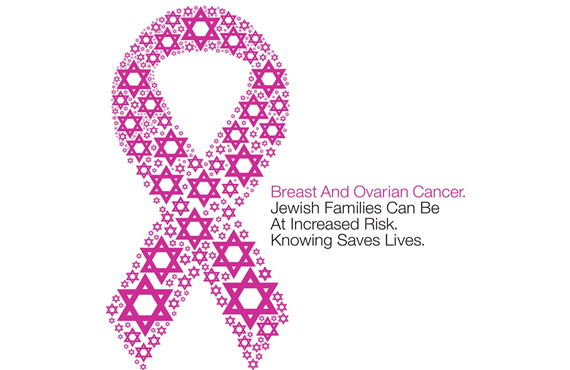Penn's Basser Research Center for BRCA Brings Mission Into U.S. Synagogues
This fall, the University of Pennsylvania’s Basser Research Center for BRCA is taking its lifesaving efforts to raise awareness about hereditary breast and ovarian cancers on the road and into synagogues across the country.
Beginning in August, more than 1,500 Jewish congregations from coast to coast received a package containing eye-catching informational posters to hang throughout their congregation and fact sheets with details on the cancer-risk BRCA1 and BRCA2 gene mutations – which disproportionately impact the Jewish community. An enclosed letter from a rabbi or physician calls on leaders in the faith to discuss the issue with their congregations during the Jewish High Holidays in September, in hopes of prompting conversation continuing into Breast Cancer Awareness Month in October.
Stamped with a bright pink ribbon made from Jewish stars, the 15,000 posters – which the outreach initiative’s organizers hope will be hung in lobbies, restrooms and other hard-to-miss spots inside synagogues – call attention to a striking statistic: 1 in 40 individuals of Ashkenazi Jewish ancestry carries a BRCA mutation, more than ten times the risk of the general population. Men can carry and pass on the gene mutations, too, which also increase risk of pancreatic, melanoma, and prostate cancer.
But as the poster’s bold lettering attests, “Knowing Saves Lives.”
“With proper genetic counseling, testing, education, and screening, women and men with BRCA mutations have the power to dramatically reduce their risk of developing these cancers and to catch them early when they are most curable,” says Susan Domchek, MD, executive director of the Basser Research Center for BRCA and an oncologist in Penn’s Abramson Cancer Center. “We wanted to partner with synagogues to build on the strong trust that rabbis have already formed with their congregations. These religious leaders are in a position to empower their congregations to learn about their risk and take decisive steps to prevent and detect cancer in their families.”
Since there is no reliable early detection method for ovarian cancer, Domchek and other cancer risk experts encourage women with BRCA mutations to undergo surgery to remove their ovaries by age 40, which research shows dramatically slashes their risk of developing that type of cancer and reduces the risk of breast cancer as well. Many mutation carriers – including the actress Angelina Jolie – also opt to undergo a prophylactic mastectomy. But advanced imaging technology offers additional choices, since frequent mammograms and breast MRI can also be used to monitor for early breast cancers. To expand those options even further, Penn’s Basser Research Center for BRCA was founded in 2012 through a $25 million gift from Penn alumni Mindy and Jon Gray in memory of Mindy Gray’s sister Faith Basser, who died of ovarian cancer at age 44. Researchers in the Basser Center are already in the midst of studies for both prevention and treatment of BRCA-related cancers, from potential vaccine therapies to prevent BRCA1/2-related cancers to managing the side effects associated with prophylactic removal of the ovaries.
Click here to view the full release.








